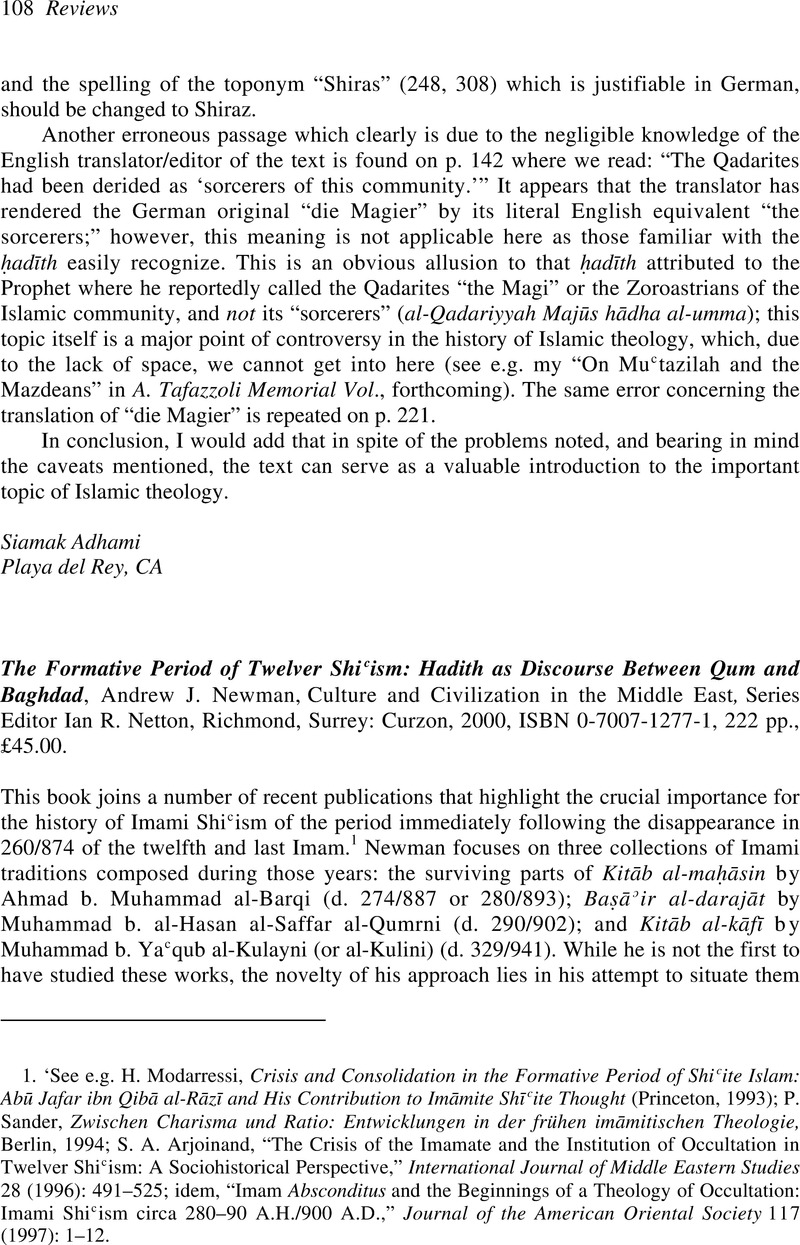No CrossRef data available.
Article contents
The Formative Period of Twelver Shiᶜism: Hadith as Discourse Between Qum and Baghdad, Andrew J. Newman, Culture and Civilization in the Middle East, Series Editor Ian R. Netton, Richmond, Surrey: Curzon, 2000, ISBN 0-7007-1277-1, 222 pp., £45.00.
Published online by Cambridge University Press: 01 January 2022
Abstract

- Type
- Reviews
- Information
- Copyright
- Copyright © The Society for Iranian Studies 2003
References
1. ‘See e.g. Modarressi, H. Crisis and Consolidation in the Formative Period of Shiᶜite Islam: Abū Jafar ibn Qibā al-Rāzī and His Contribution to Imāmite Shīᶜite Thought (Princeton, 1993)Google Scholar; Sander, P. Zwischen Charisma und Ratio: Entwicklungen in der frühen imāmitischen Theologie, Berlin, 1994Google Scholar; Arjoinand, S. A. “The Crisis of the Imamate and the Institution of Occultation in Twelver Shiᶜism: A Sociohistorical Perspective,” International Journal of Middle Eastern Studies 28 (1996): 491-525CrossRefGoogle Scholar; idem, “Imam Absconditus and the Beginnings of a Theology of Occultation: Imami Shiᶜism circa 280–90 A.H./900 A.D.,” Journal of the American Oriental Society 117 (1997): 1-12.
2. See e.g. al-Majlisi, Muhammad Baqir Biḥār al-anwār, (Tehran, 1376–94/ 1956–74), 6: 235, 27: 268, 61: 53Google Scholar.


